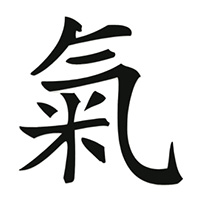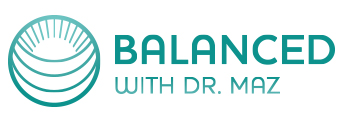Chinese Medicine: one of the oldest & most complete health systems in recorded history.
Chinese Medicine is a complete system of health with a continuous clinical history of several thousand years*, and it is the original functional medicine: focused on getting to the root of the problem and restoring optimal function for better health and vibrant wellbeing.
Chinese Medicine understands that health is a dynamic balance that arises from the body’s ability to respond appropriately to stresses and changes (also known as homeostasis). When this ability to adjust balance appropriately is compromised, illness or disease can arise. Therefore, the goal of Chinese Medicine is the regulate and maintain balance in all the body’s systems, by identifying where the balance has been shifting towards one extreme or the other. In the Chinese language, these opposing – but related – extremes are referred to as Yin and Yang.
Yin and Yang
While Yin and Yang may sound mystical and exotic, they are very pragmatic concepts, and can be seen all around us. They are the opposing pairs seen in:
| Yin | Yang |
| Cold | Hot |
| Dense | Light |
| Material (of substance) | Energetic (no substance) |
| Static, receptive, passive | Dynamic, motive, active |
| Dark | Light, bright |
Yin & Yang from a medical perspectivePlease note: these examples are highly simplified for the sake of illustration; like humans, each expression of disease is complex and layered, combining aspects of both Yin and Yang, or hypo- and hyper-function |
|
| Fatigue | Insomnia |
| Lack of appetite | Constant hunger |
| Hypofunction / hyposecretion | Hyperfunction / hypersecretion |
| Atrophy | Hypertrophy |
| Depression | Mania |
Everything that we see and experience in our world is composed of Yin and Yang combined – humans included! Bright sunshine is Yang, a cool shady spot is Yin; fire is dynamic Yang, water is soothing Yin.
From an anatomical perspective, Yin also equates to the material of our bodies – bones, blood, flesh, body fluids etc. Yang is dynamic and mobilising, and therefore it relates all that is functional – from breathing, heartbeat, and brainwaves, to the regulation of fluids and hormones, and the metabolism of everything. This covers the obvious metabolism of food in the digestive system, down to cellular metabolism at a microscopic level. Though Yin and Yang are constantly in flux, their dynamic balance results in a state of health and wellbeing. When they lose this balance health suffers. In the case of more Yin than Yang, we may feel tired or sluggish. As Yang is dynamic and Yin is static, we might lose appetite, become constipated or experience shortness of breath. The exact nature of the imbalance will depend on individual constitution, and on what systems of the body have been disrupted.
Qi
This is another medical term that has gotten a bit lost in translation! There is nothing mystical about the word Qi. In everyday Chinese language, the word Qi is commonly used to describe everything from emotion, temperament or manner (a person’s “air” or vibe), to weather conditions. It appears in the Chinese words for hovercraft, balloon and windpipe, amongst others, and so we can see the difficulty in trying to translate this very broad term literally – it is a uniquely Chinese concept that defies direct translation into English.
In written Chinese, Qi is represented by a rice grain and steam, suggesting metabolism or the transformation of one thing into another. And indeed, this is how the term Qi is used in Chinese Medicine – to describe metabolism, circulation, structure, alignment and the healthy function of all systems of the body. Like Yin and Yang, Qi can also become unbalanced, becoming blocked in some places (think of an acute sprain) and lacking in others (numbness or weakness). It can move too quickly (diarrhoea) or not enough (cold limbs), or move in the wrong direction (heartburn or prolapse). So you can see that a diagnosis of “Stomach Qi deficiency” (not enough Stomach Qi) simply refers to the fact that the body is lacking the resources to perform certain digestive functions sufficiently, resulting in compromised health. Makes sense, right?
Qi, Yin and Yang in the human body
Between the three parameters of Qi, Yin and Yang, we can describe the material, functional, metabolic and structural state of the body: this means that diagnosing in these terms is as pragmatic as diagnosing changes in biochemistry, movement, pressure, humidity and temperature.
If this is starting to sound a bit like the weather channel, that’s because Chinese Medicine considers the individual as an intrinsic part of their environment – and therefore, affected by it. Most of us know somebody whose joints hurt more in cold or wet weather. You may have experienced restless sleep on a hot night, dry skin in areas of very low humidity, or swollen limbs in areas of high humidity. People who suffer from hayfever will certainly feel affected by their environment. Similarly, recent studies have shown that being cold does actually lower immunity and make us more likely to catch a cold – it’s not just an old wives’ tale!
We are all different
All of the above examples are evidence of an imbalance in an individual’s body: why do some people’s joints hurt in cold weather while others feel nothing at all? Chinese Medicine explains this in the understanding that the affected individual lacks the function (Yang) to adequately warm and nourish the joints. In summer (which is Yang), the warmer weather can ease the person’s pain by improving circulation and mobility, but as the weather cools, they don’t have enough of their own Yang to maintain adequate circulation and function, and so pain ensues. The application of heat bags, heating rubs, acupuncture, heat lamps or gentle movement can alleviate the pain by bringing heat to the area, and restoring balance. An individual with strong Yang will not suffer the same symptoms in cold weather (though they may get more restless in hot weather, while our poor person with painful joints will be happy and pain-free!). From this example, we can see how important individualised treatment is. This is one of the reasons why Chinese Medicine can be so effective.
So how can all of this help me?
* The oldest surviving Chinese Medicine text, the Huang Di Nei Jing (Yellow Emperor’s Classic), dates back to around 200 BCE and is still relevant today, though the discovery of stone acupuncture needles dating back to the Neolithic period suggest that the practice is several thousand years older still.


The interplay of Yin and Yang, depicted in the Tai Qi symbol.

The Chinese pictograph for Qi, showing a grain of rice being cooked into vapour.
